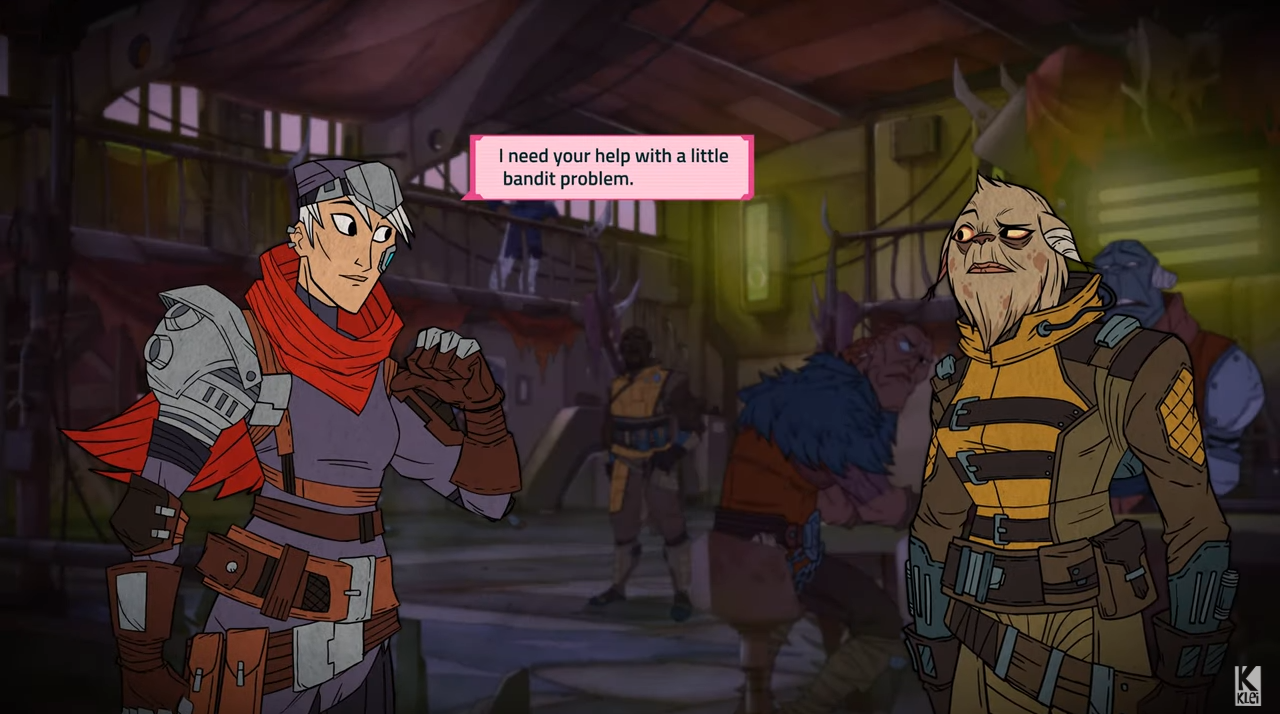

I had run-throughs of Griftlands where I could tell my deckbuilding was bad and, sure enough, I didn’t last too long and had to restart. The mechanics and the structure are completely at odds and it can be quite jarring. Either you’re a roguelike game designed to have runs that last one to two hours, and to be replayed with different options and tactical choices, or you’re an RPG, designed for longer playthroughs with lots of story-based content and character-driven connections. Which is great and all, but… isn’t this a roguelike? My main criticism of Griftlands is that it wants to have its cake and eat it too. There is world-building going on here and the characters have arcs and personalities. When you visit new areas, with new people, there are conversations to be had that contain all sorts of names and places highlighted in blue (which means you can click on them for more information on them). The game contains story-based cut-scenes, named characters and actual plotlines. No-one would claim that Slay the Spire’s strength was its storytelling or characters (the characters don’t even have names) and Griftlands goes in quite heavily in this area.

The other main addition that jumped out to me was Griftlands’ attempt to tell a story. A negotiation with the local dock workers’ union. You don’t often get a realistic option between whether to negotiate or fight in a given situation though so you have to be careful not to prioritise one deck too much over the other. Managing, refining and improving two decks at the same time is an interesting twist and definitely takes some brainpower.

In a negotiation, you damage an opponent’s arguments rather than their health, and there are a bunch of different tactics, but, gameplay-wise, it’s in the same ballpark. Sometimes you have to scrap your way out of a situation, sometimes you can talk your way out of it. The main area that Griftlands builds on this formula is the idea that you have two decks a combat deck and a negotiation deck.
Griftlands e3 upgrade#
You have to manage your hit points and get to the end of the day alive to heal up as well as choosing from battle rewards to upgrade your deck and build for future encounters. Your journey starts with a basic deck of actions, and you travel about the landscape of an alien planet, taking missions that involve you hurling said cards at one or more opponents whilst trying not to be taken out by their own offensive. Various events can lead to you getting back-up in combat.Īt its core it is a roguelike deckbuilder very much in the Slay the Spire mould. Griftlands, then, should have been a home run for me. Every run, even the ones that ended in success, didn’t end perfectly and there were always new mechanics and new possibilities to try out.

I found I couldn’t get enough of that sweet, sweet roguelike deck-building action. In Griftlands players take on the role of a mercenary trying to get by on an alien world taking missions to be resolved by either violence or diplomacy and all handled in-game through deck-building.īack when it first came out, Slay the Spire awakened a demon in me one that only grew when its sexy cousin Monster Train came along.


 0 kommentar(er)
0 kommentar(er)
